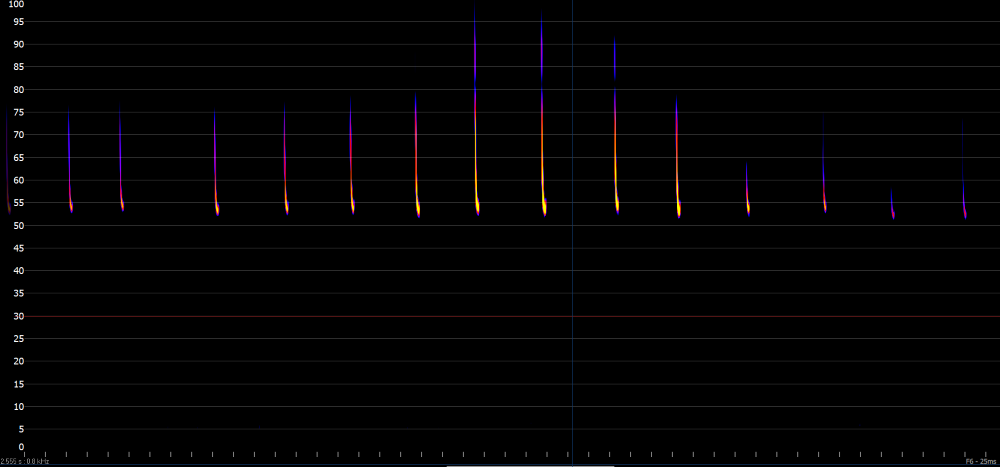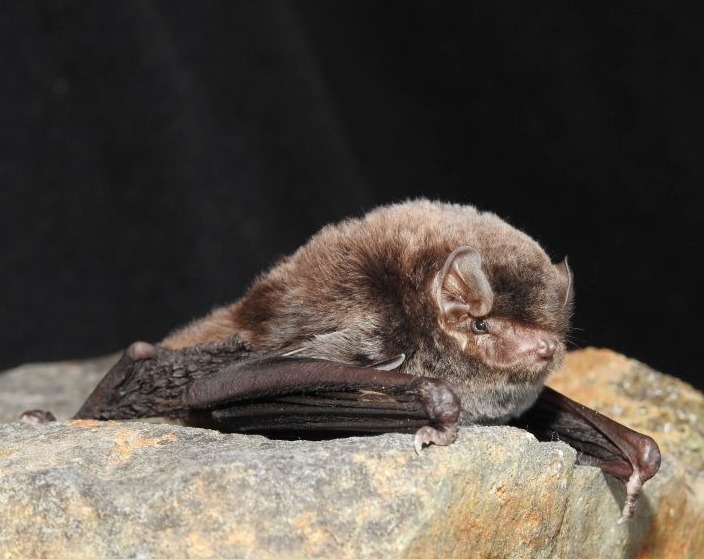ARI's microbat research
Bats are a fascinating yet poorly understood group of our native mammal fauna. This is especially the case for the small insect-eating bats, often called ‘microbats’, which are rarely seen by most people. Microbats play an important role in ecosystem functioning by consuming large quantities of insects, including mosquitoes and agricultural pests. Each bat can eat over half its body weight in insects in a night (imagine doing that yourself!). Since they only come out at night, microbats are notoriously difficult to see, hear, and therefore to monitor.
To study these bats and learn more about their ecology, habitat requirements and conservation needs, ARI uses a wide range of innovative approaches and technologies. This is especially important for threatened species where understanding their status and population trends helps wildlife managers to assess the effectiveness of recovery actions.
Southern Bent-winged bats flying in a coastal cave
This video shows Southern Bent-winged bat flying out of a coastal cave. While this is in the pitch black, the camera can see in the infrared light.
Estimating population numbers of cave-dwelling bats
White lights disturb bats. ARI uses thermal and infrared cameras to ‘see’ in the dark to reduce interference with bats while they roost during the day or fly out of caves at dusk. Thermal cameras detect the heat of the bat (like Hot Spot at the Cricket), while infrared cameras use high-frequency light that neither the bats nor people can see. Pairing the thermal camera technology with motion-tracking software, scientists count bat numbers as they leave their caves using an automated specialist counting program. An accurate estimate of bats leaving the cave can be made by measuring the number of ‘outs’ and ‘ins’ tallied for the 1.5 hr fly out at dusk.
| Bats flying out of a cave using a thermal imaging camera, footage is then used to count the number of bats | Thermal camera footage of bats roosting and flying within a cave | A creche of newborn young with a few adults nearby roosting in a cave filmed with infrared light |
For over 5 years, ARI has used these techniques to monitor the Critically Endangered Southern Bent-wing Bat (Miniopterus orianae bassanii) in south-western Victoria. The development of these techniques has allowed ARI to accurately track population changes over time, assess the benefits of management interventions and provide advice for the protection of the species and their critically important roosting sites.
Assessing genetic diversity
When threatened species get to critically small population numbers, low genetic diversity may result in them becoming even more threatened. By examining the genetic diversity of populations, we can determine if genetic interventions such as gene mixing or translocations are needed.
The South-eastern Long-eared Bat (Nyctophilus corbeni) is a threatened species with a very limited distribution within Victorian. It is found predominantly in a small area in the north-west in the Nowingi area and adjacent Hattah Kulkyne National Park. A recent ARI study trapped extensively for this species but caught only a small number of individuals. A mark-recapture analysis suggested that the population may be critically low – less than 50 individuals. Genetic samples were taken which revealed an unexpectedly high level of genetic diversity for this tiny population. This may reflect a ‘lag effect’ from when the Victorian population was larger or indicate that this population is connected to larger populations in NSW, despite appearing to be physically separated.
Incorporating an understanding of the genetic makeup of populations of threatened species has enabled a more detailed understanding of the status of the species and what recovery interventions may be required.
Identifying bats from their high frequency calls
Most species of microbats produce echolocation calls well outside our hearing range. Humans can typically only hear up to about 15 kHz while Victorian bats produce calls up to 70 kHz. To eaves drop on bats, ARI uses ultrasonic detectors which can record these high frequency calls. These can be set for several months to survey bat activity and be used to monitor populations of both threatened and non-threatened species. This survey technique can capture many calls with a recent study in north-western Victoria recording over 6 million. With numbers of this scale, an accurate, automated approach is needed as it is not possible to manually identify all of these calls.
ARI is currently developing sound-recognition software using deep-learning artificial intelligence (AI) to identify frog calls. This approach is now being extended to include high-frequency bat calls. Using thousands of ‘reference calls’ from known individuals, the program can ‘learn’ what each species’ calls look like. For the 23 species of microbats in Victoria, many of their call characteristics overlap making them difficult to tell apart. It is hoped that by using the new AI approach we will be able to identify each species’ calls more quickly, accurately and cost-effectively to support microbat monitoring.

The high frequency echolocation call of a Little Forest Bat Vespadelus vulturnus, where the pulses are above 50 kHz (human hearing is up to about 15 kHz).
These exciting innovations in bat research techniques and approaches are enabling ARI researchers to understand these important, yet poorly understood species, and to provide high quality information to guide their management and conservation.
This work has been funded by a range of partners and collaborators: DEECA Bushfire Recovery and Icon Species programs, Zoos Victoria and Mallee Catchment Management Authority.
For more information contact: Lindy Lumsden lindy.lumsden@deeca.vic.gov.au or Amanda Bush amanda.bush@deeca.vic.gov.au
ARI Seminar - Marvellous, mysterious mammals, ARI’s legacy in mammal research
Page last updated: 28/03/25
